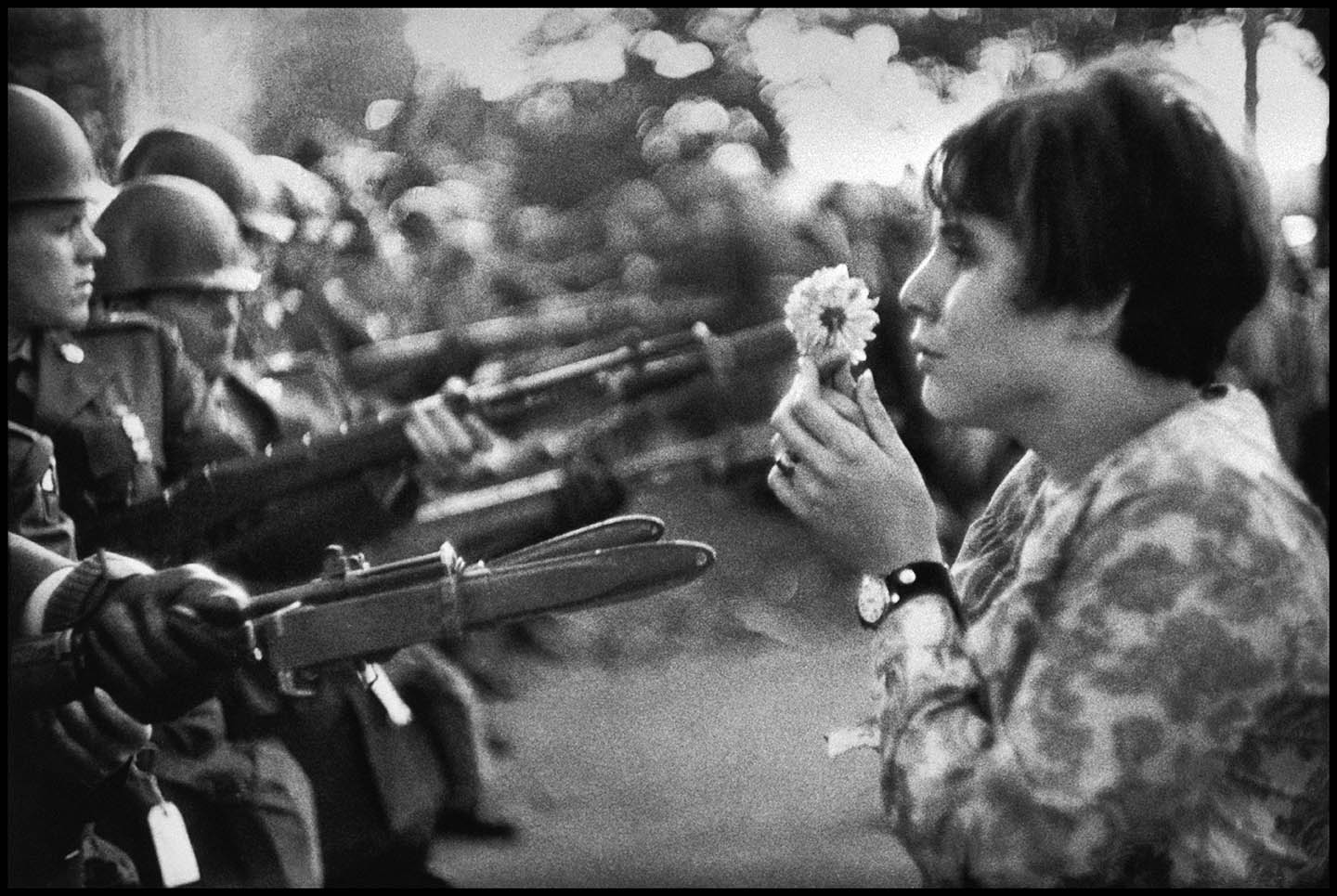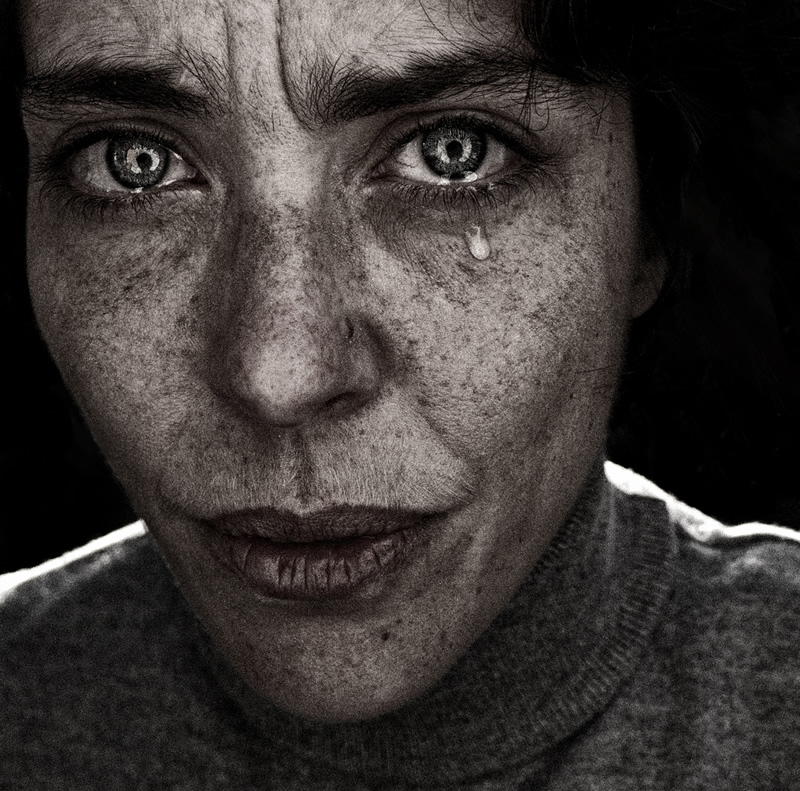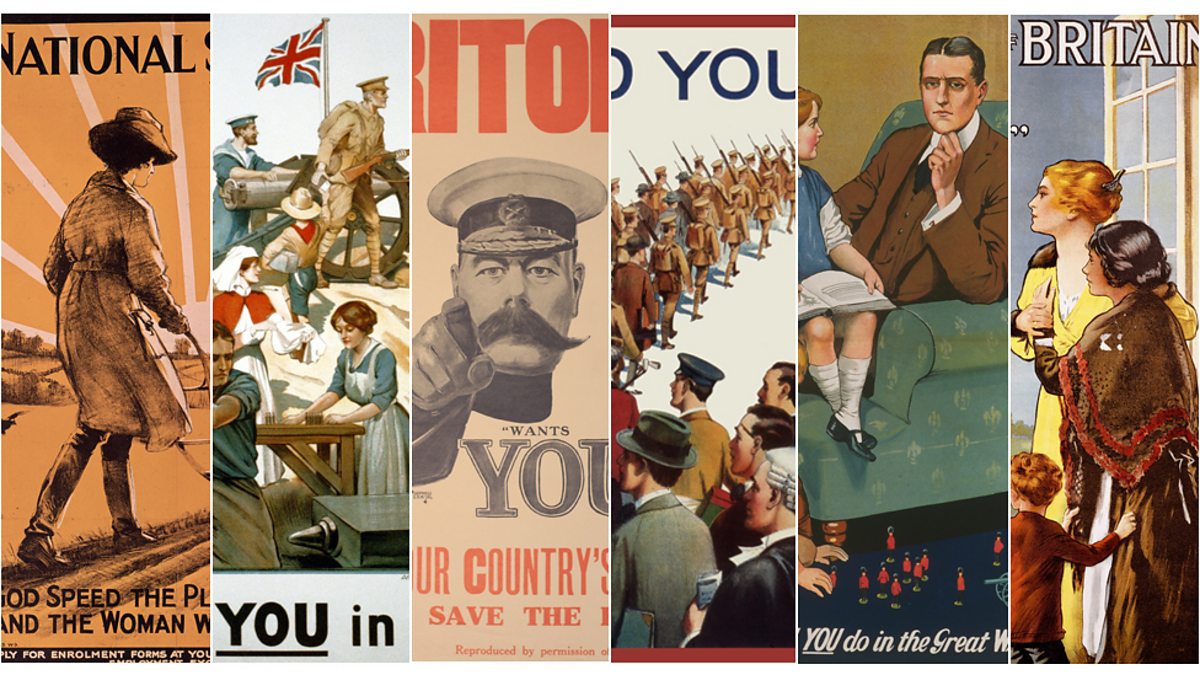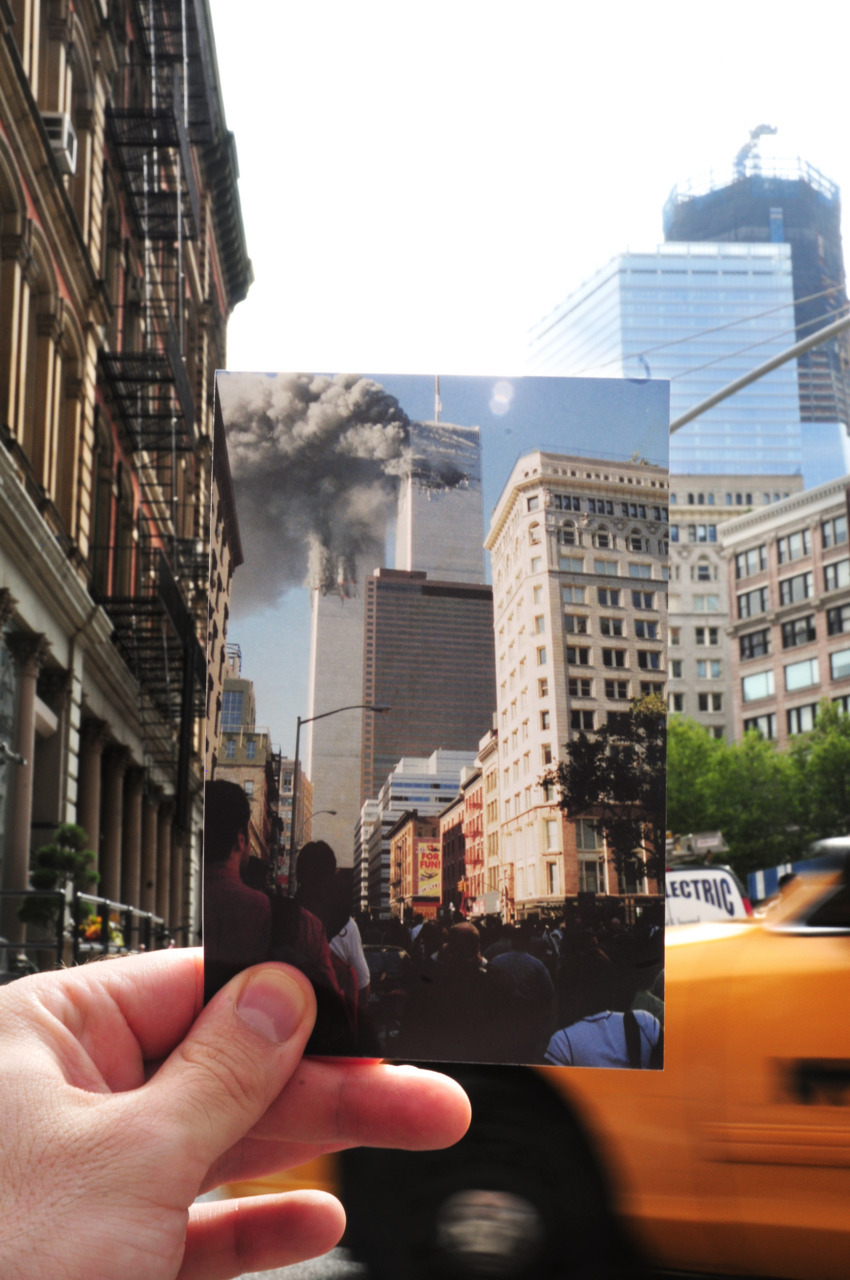Bibliography: List all relevant sources used

How powerful a medium is family photography when looking at identity?
“Photographs state the innocence, the vulnerability of lives heading towards their own destruction”. Marianne Hirsch in Family Frames. Marianne Hirsch spoke about family photography and described how powerful the medium is when looking at family history. She explains how innocent photographs are and how vulnerable life is when looking at people who don’t know that they are heading towards the end of their lives. I want to look at how powerful and important photography is when looking into personal and familial identity. Photography immortalises people and keeps them alive in a single moment. I am going to study my family history because I believe learning about where I come from may bring my closer to my own heritage. I am going to speak to my grandmother who has kept family records, photos and documents and use them to create photomontages and recreations of the photos. The combination of recreating images and photomontages/ edits from different sides of my family will show the power of family and how I am influenced by the people who have come before me. I have chosen three artists who interest me in the way they take photos and portray meaning. Firstly, is Chris Porsz who is restaging old images of his family in the same location. Next is Christian Carollo who recreates the image whilst holding the image in the photo at the same place. The final artist I will look at Is Virginie Rebetz who made a photobook about the disappearance of someone’s daughter and is using images and documents from family archives to piece together a story about what happened to her, as a missing person investigation. There will be a few links to my previous projects in the methods in which I take photos. For example, I will utilize black and white with great tonal values creating drama, I will use photoshop to edit some photographs to portray a specific message (juxtaposition) and I will make retro like photos from images I take. All of which I have previously used to show my personal identity and have worked and been successful.
Historical and Theoretical Context: Personal and Family Photographs
“Users bring to the images a wealth of surrounding knowledge. Their own private pictures are part of the complex network of memories and meaning which they make sense of their daily lives.” Liz Wells (Photography: a critical introduction). Photography began a transformation after the Victorian era where the work of amateur “hobbyist” photographers began. George Eastman had marketed his Kodak camera by 1899 with the slogan ‘You press the button, we do the rest’. The Box Brownie claimed that everyone could afford it and it was so simple children could use it. Photography has now put the controls in the hand of everyone making everyone with a phone an amateur photographer. Due to the development of technology the way images are arranged using digital technology makes It easier to create narrative. The development of technology is driving innovation in photography. Websites which specialise in family history have fuelled an increase in interest of tracing ancestors and discovering old images, documents and reconstruction of images. The history of the medium of personal photography has existed since the 1800’s but was first compared to family photography by writers such as Terry Dennett. He compared family albums to that of groups in society. Private and personal photography has eventually become family photography. Without context, images are seen as being thin and provide ghostly hints of others’ lives which spark a detective project to construct meaning. Personal pictures are very unreliable but due to the unreliability interest is constructed and questions are asked. Questions such as whom are these pictures? Who see them? To whom do they communicate? Family photography properly began with travelling photographers making postcards. However, family albums were being created in the nineteenth century, but were only for the rich who had the leisure and money for photography. Another historical moment for photography was the increase in popularity in going on holidays. With the invention of motor vehicles, people wanted to bring cameras on holiday to have memories of where they have been. With the coming of the First World War, families began to buy cameras to record soldiers leaving for the war. Many who were photographed never returned leaving a sad statement in family albums from the twentieth century. Images from a post WW2 world are described as “Part of our lived experience and hint at meanings which are tantalisingly within our grasp”. In my own study I will show images from the lifetimes of my parents and grandparents but also my lifetime. I will arrange the images like a timeline starting from the lives of my distant relatives and then to current day.


Powerful Photography
“Photography, as a powerful medium of expression and communications, offers an infinite variety of perception, interpretation and execution”. Ansel Adam’s quote about powerful photography provides an insight into both people and photography. Everyone is different from everyone else and the way we perceive and consume messages and information is different. One image may have a different meaning to one person versus another and one image may resonate more with one person than with another. Power in relation to photography can be to do with the power of the medium of photography to communicate important and personal messages or, it could be to do with the construction of a powerful image. Research into the construction of a ‘powerful image’ gave me a few important things that if done correctly, will help create power in photography.

Subject
The first important thing is a subject. The subject has to resonate with the people looking at it and needs to make us intrigued. For example, who is this? Where are they? Why are they there? Etc. The subject doesn’t need to be a person, it could be a building, animal or scene of nature but whatever it is, it must connect to the audience for a reason. This could be mystery, beauty, danger or love etc. Alone, the subject doesn’t make an image powerful however in sync with other factors will make an image powerful.


Framing
Next is framing. If an image has a good, powerful subject but incorrect framing the proper meaning will not be understood. With framing, it is important to frame using theories such as the rule of thirds and photo geometry in mind. This creates a strong composition for an image making it clear for people looking at it what story and meaning you are trying to tell.


Moment
The moment a photo is taken is vital in creating a powerful photography. In a powerful photography you see an image capturing an expression like a smile, the wind blowing a piece of rubbish or a child’s first steps. The moment is seen as powerful in images such as an endangered animal, a lightning strike or shooting stars. It is so effective and powerful because you have captured a rare event which is there for one moment and gone the next.


Lighting
The lighting is crucial to an image as it creates a sense of mood, drama and emotion. The way light illuminates a certain part of an image tells a story. For example, If the lighting in an image of new-born baby is constant, messages aren’t portrayed however if there is low light except a ray of light only on the baby, it creates another message.


Emotional Impact
Finally, emotional impact is the final factor to help create powerful photography. The emotional impact is the overall outcome of all the other factors put together. This is different for everyone as people perceive messages differently however, the combination of the other factors no matter who it is will create an emotional impact. They could laugh if the image is funny or cry if the image is sad.


Powerful Meanings
The other way power is used in photography is in the construction and contribution of meaning. Images alone can be powerful however become ultimately ‘powerful’ when used in the right place. Images with powerful meanings have been used for many years and a good example of one of the first examples of this is propaganda. Propaganda has been used throughout the 20th century in the many Wars that occurred. It was used to provide information usually of a misguided nature to fuel a certain political agenda. Propaganda has been used in the First World War and famously by Hitler to lay a base for his rise to power in the brink of World War Two. Propaganda was also used during the Cold War by Soviet Russia and famously in the writings of George Orwell in his Novels Animal Farm and Nineteen Eighty-Four.

Another example of photography with powerful meaning is the variety of images published by National Geographic. Nat Geo is an American monthly magazine which contains photojournalism and is one of the most read magazines of all time. It was founded in 1888 and began publishing photos in 1905. During the Cold War, it presented messages of a balanced view of physical and human geography. Years later, it now presents messages and stories on conservation and environmental and social issues. Nat Geo published a story with it’s 21 most compelling images of the 21’st century containing the most compelling and important stories. I will look at the images and choose a few of my personal favourites and explain why I believe they prove the fact that photography is a powerful medium of expression.

The photo above was the most compelling image from 2001. The photo shows the moment the second plane hit the second World Trade Centre. The photo is powerful because it is so raw and documentative. You can see the dark outline of the plane heading towards the second tower amongst the plumes of smoke coming from the first tower.

The photo above was taken in 2007 and shows the murder of mountain gorillas. At the time, there was only around 720 mountain gorillas worldwide and the image shows one of seven murders in the Democratic Republic of the Congo’s Virunga National Park. Nowadays, the Gorillas remain endangered due to the habitat loss and climate change. The photo is powerful because of the messages brought with it.

The photo above was taken in 2018 and shows the final moments of the last male northern white rhino before it passed away. The species was driven to extinction by poachers who hunted them for their horns. There are currently two remaining individuals who are both females meaning that after they die, the species will go completely extinct. The photo is very powerful as it shows another example of when the human species completely disrupted an ecosystem.

The last photo was taken in 2020 and shows the international backlash after the death of George Floyd. It shows how protestors came to the streets to protest over the police brutality and pushed for the removal of Confederate statues of those who fought to preserve slavery. Around the world statues were defaced with symbols and messages to spark the removal of these statues. The statue in the photo above was transformed from a memory of slavery into a memorial for George Floyd and BLM. The photo has power in the form of messages of BLM and also in the form of a community that stand and fight together to get recognition for their cause.
Dear Photograph
Dear photograph is a photo project that began in May 2011 and was created by Taylor Jones. Jones was born in Canada and started the project when looking at family albums. His brother happened to be sitting in the exact spot he had been sitting years before and Jones grabbed his camera and took the first “Dear Photograph” image. There is a crudeness to holding a picture with one hand and photographing it with the other. Jones allows people to send in their own photos in his style which he publishes on his blog with a little paragraph. The paragraph starts with ‘Dear Photograph’ as well as a message from the person that made it. The message is personalised and has a strong meaning for the person who wrote it. I like the message Taylor Jones’s style of photography brings. It connects the original image and the people in it with the recreation and staging of the image. There is a lot of importance in going back to where a loved one has been and doing the same as them many years later. I like the contrast of the retro image versus the new background image. I think it provides a story and extends the scene that the subject is originally in. I could apply this to my project by getting the photos taken in Jersey and holding the original in front of where it was taken. I believe this could be a good way to show family and how I am walking In my ancestors footsteps.



John Clang
John Clang is a Singaporean visual artist and photographer who explores issues such as identity, memory and longing. I will specifically look at his project “Being Together” as it is a way to bring families together who aren’t able to be there in person. This can be due to long distance issues or family members who are no longer alive. Clang described this as being dis (membered) by time and space. He creates emotion in his work and says that when a family sees images of them all together, it brings them closer and goes beyond the two-dimensional medium it was originally captured on. I like the way he projects families onto walls and positions other members so that they can be part of the family photo. It is a good way to get a ‘family photo’ when some members of the family are across the world or have passed away. I could project images of my distant family next to my actual family and edit us all together. This could be a good way to show family as a whole instead of smaller groups together.

Chris Porsz
Chris Porsz is an English photographer who has recently recreated hundreds of images he originally took in the 1970’s and 80’s. He tracked the people and places in the photos down and created his book called “Reunions”. His method of taking photos is quite unique. He gets an old black and white photo and takes a new colour one with the same people at the same place. The contrast between the old photos and the new photos shows the improvement in technology from the old, grainy black and white image versus the new, detailed colour image. I could apply this to my project and recreate images taken by my grandparents in Jersey and in England and contrast them together making a series of images like a before and after.

My Project
So far in my project, I have gone to see my relatives to get photos, documents and objects to construct a timeline of my family. I have scanned images from of my Mum, Dad, Grandads and Grandmas and my Great Grandparents. I have images that I will use to create a story of where my family came from and how I exist. Below are some images I have scanned in.


As well as scanning in family images, I also scanned the dates and names of people in the images. With these I can get a good understanding and layout of what my timeline of photos will eventually look like in the photobook.

Conclusion
In conclusion, power in photography is very common however creating power is difficult but when done correctly is very successful in telling stories and giving opinions. The definition of power is something that has the capacity or ability to direct or influence the behaviour of others or the course of events.
Photos can also influence people easier if they are directly connected to them for example, family photographs. My family would think that images that show my history which involve them have power to them however a random person my not be affected the same way.
I believe there is a lot of power in recreations of photos that were taking of my family many years before. It shows a close connection between myself and my family and brings me closer to some family members who I could not meet.
Bibliography

Marianne Hirsch family frames
https://books.google.je/books?id=IRt3E0nfuo4C&pg=PA17&source=gbs_toc_r&cad=2#v=onepage&q&f=false
Liz Wells (Photography: a critical introduction).
https://www.canva.com/learn/examples-of-propaganda/
National Geographic https://www.nationalgeographic.com/photography/article/the-21-most-compelling-images-of-the-21st-century
https://www.theguardian.com/artanddesign/2012/jan/04/dear-photograph-pictures-travel-time
https://en.wikipedia.org/wiki/John_Clang
https://thamesandhudson.com/family-photography-now-9780500544532
